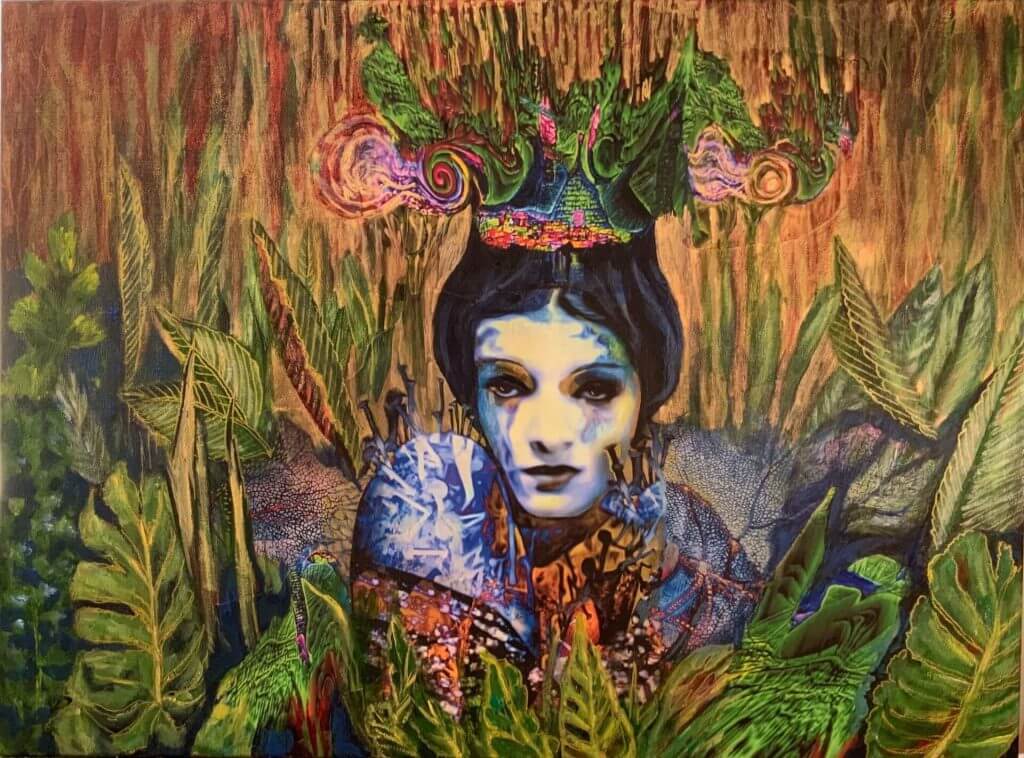Original article can be found on JewishBoston

Mixed media artist Cynthia Brody is having an exclusive exhibit of her work at the Multicultural Arts Center in Cambridge from Dec. 4, 2014, through Feb. 9, 2015. An opening reception will be held on Monday, Dec. 8, from 6-8 p.m. at the center. I asked Cynthia, who also edited a collect…
So, before we jump into specific questions about the business, why don’t you give us some details about you and your story.
I’ve been making mixed-media art for over 4 decades. I have continued to be interested in representing women in surreal surroundings. Although I enjoy painting, and do quite a bit of painting in each piece, I like the complexity of combining photo images with paint to create a story that looks believable but in reality, is made up of unrelated images. I’m always looking at the shape and texture of the world around us and figuring out what else might look like that.
I would love to hear about your upcoming show. What should we be looking for? What was your inspiration for this exhibit?
It’s interesting that you should ask about what people should be looking for. My art holds secrets and surprises. I use diverse photos out of their usual context and combine them with acrylic paints to create something that seems recognizable. It’s a technique I developed over 35 years ago and have stayed with, mostly because it’s fun and challenging. When I look at things in nature, I’m always considering what else they resemble. One piece, “Cactus Girl,” developed from photos of different kinds of cactus I shot on my iPhone while taking a walk (see image below). I altered the photos and printed them, and they became the basis for the woman’s bodice and skirt. Other pieces have rocky ledges or the steps of Machu Pichu or Florentine rooftops as the foundation of their costumes.
Strange things lurk in backgrounds as well, and it’s only upon closer study that these hidden images can be seen. I’ve always been drawn to representing women, maybe because it’s a subject with which I’m very familiar. They reside in surreal settings and represent differing experiences and cultures.
“Bittersweet Legacy: Creative Responses to the Holocaust” is the title of a collection of poetry, short stories and art inspired by the Holocaust that you edited and collected. When I think of the Holocaust I think of more bitter and less sweet. What were you trying to convey here?
You’re not the first person to ask that question. The sweet has to do with the survival of the Jewish faith, which is part of the legacy. Also, the people in this anthology found a way to transmute so much pain into something beautiful in its truthfulness. Poetry, stories and art were vehicles for an exploration of the terrible past that clearly had made a huge impact on each of the contributors. I was inspired to do the anthology after hearing about so many people compelled to create on this subject, myself included. I felt it was a kind of underground collection that wasn’t shared with others. I’ve never felt so strongly that this was something I must bring out into the light.
It took seven years to get published, but it resides in libraries around the world and is a testament to the many experiences of survivors, children of survivors and also a German perspective (in the chapter titled “Speaking to the Enemy”) and American experiences during that time (“The American Experience of the Holocaust”). There were several art exhibits based on the anthology, and readings and school presentations. Though the students were mostly silent, their written reviews spoke of the exposure to the work as transformative. Art gets in, often in ways that statistics and documentaries cannot.
In addition to your art, you’re a therapist. How have you found these two pursuits have related to one another?
I often think in pictures as people are speaking of their struggles. I sometimes use art therapy, and it has the ability to cut to the core of a situation or complex feelings in ways that talking cannot. In my art, which preceded my therapy career of the last 23 years, I’ve always sought to convey the complexity of beauty combined with pensiveness.
When I created work about the Holocaust it was very emotionally challenging, but a catharsis. I have worked with second- and third-generation Holocaust survivors, both as therapist and editor, and am happy to now offer these services in my Lexington office. As a child of survivors, I have an understanding of the myriad emotions involved in interacting with family—issues of differing cultures, guilt and feelings of not belonging. Of course I still see the broader public and am focused on therapy for girls and women currently. I can’t seem to stray from learning about and representing the female experience.
You recently relocated to the Boston area from California. What are you missing most about the warmer coast?
Well, the warmth! I don’t regret my move though. I missed my granddaughters way too much, and now I see them all the time. It’s good to be closer to my daughter, who lives here, and my son, who lives in New Jersey. I gave California 25 years, but I’m an East Coast girl at heart. I lived in New Jersey for 39 years, although I don’t remember it being this cold! I love the beauty of nature here and I’m happy to be able to do the two things I love to do: make art and connect with people about getting through life the best we can.
